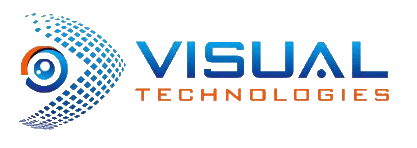OPUS form


Most test processes and the technical service are still controlled and recorded with paper documents . This is where our "OPUS form" app comes in. Test tasks and service orders are given digitally on the smartphone, processing and documentation are carried out through voice input, handwriting recognition and photo and video recordings .
Opus form in the test field and service
The interpretation of the "OPUS form" means that the intended process steps and their documentation can no longer be omitted. By monitoring the processing of the process steps and their feedback, the status of the completion is always visible in real time and with a time stamp.
The robustness of OPUS form brings transparency even in "difficult corners" (climate, humidity, dust) without a connection to a network, because voice input also works offline.
By evaluating the time stamps of the inputs, information about influencing variables of the time consumption can be obtained.
What features does Opus offer?
Specifications for activities via voice output (headset) and on the display.
Voice input of activities, measurement results and descriptions up to 80dB without microphone possible (numbers, letters and alphanumeric).
Plausibility check of the measurement results and warning when important values are exceeded
Multilingualism of the same application (foreign assignment with mixed teams)
Identification of the speaking person - here also for access controls
Transfer of predefined information via EXCEL or other databases to the OPUS Form Control Center
no transmission errors, thanks to automatic filling of a predefined output form

Function: Alphanumeric optical recognition

Fields of application
Test field: specification of measuring processes and input of measured values
Voice output of the checkpoints from extensive checklists
Voice input of the measured values for each checkpoint as well as command recognition such as "Continue", "Check" or "Copy"
Alphanumeric optical recognition via camera of small letters (2mm)
Transfer of the values, for example in CSV format, for transfer to a database for the preparation of a print output (for example directly by email) and for statistical evaluations
Technical service: Specification of maintenance and repair checklists and input of the process steps carried out
Voice output of the checkpoints from extensive checklists
Voice input of descriptions, measured values for each checkpoint
Alphanumeric optical recognition via camera of small letters (2 mm)
Documentation photos for selected process steps
Transfer for transfer to a database for the preparation of a print output for the delivery note (e.g. directly by e-mail) to the customer, trigger for immediate invoicing and statistical evaluations
Tracking, tracing and time recording
by automatically recording changes in processes over time and, if necessary, changes in location;
Time recording occurs automatically.
In addition, a statistical evaluation of the time consumption of the process steps carried out can be performed
Provide an impetus for in-depth instructions, and
Follow-up checks based on the random principle are transformed into targeted follow-up checks.


Break even in less than:
12 months

Cost Effectiveness
Depending on the complexity of the tasks, the documentation effort for an employee in the test field and in the technical service is between 15% and 25%, i.e. between 1 - 2 hours per day. In most cases it is not a question of reducing costs through the time savings. Instead, the paperless specifications and real-time feedback can greatly increase the efficiency of the technical service, which means an increase in the degree of utilization of the existing capacity. With a team size of 7 employees, the performance can be increased to the extent of one employee. This means a direct increase in the contribution margin and profit.
The advantage starts with the preparation of testing and service activities. A survey and analysis of service technicians carried out in 2015 showed that only 5 percent of service technicians received all the relevant information before their assignment. This means that only 7 percent of all missions are immediately successful. In the OPUS management system, completeness checks regarding the necessary measuring equipment, test materials, etc. can be carried out before a service order is issued to an employee. The test order is only handed over if all requirements are met. The implementation of the test activities is also supported. With a comparison of the standard values, strongly deviating entries can be sent immediately to the responsible colleagues (e-mail), which in turn avoids defective productions and enables quick rectification. Due to a "forced control" with regard to the activity steps and the corresponding entries, it is no longer possible that test reports are not completely filled out. In the cases mentioned here, the payback period for investments between € 20,000 and € 40,000 is less than a year.
